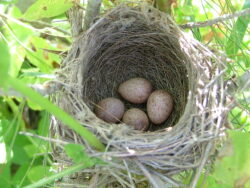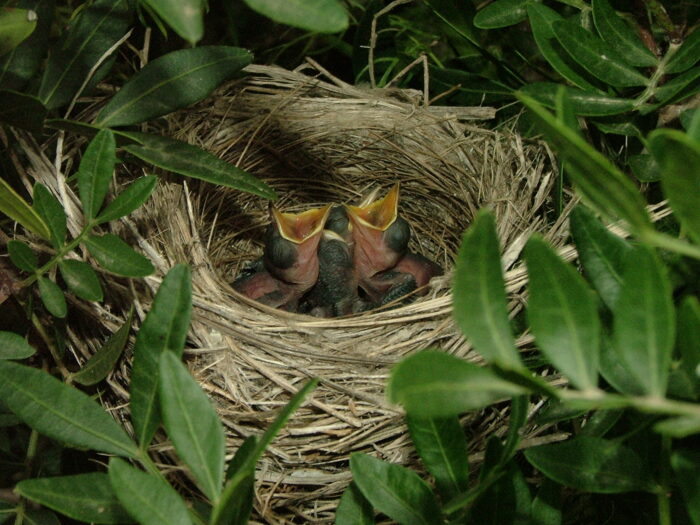Have you ever been out trekking and enjoying the warm spring weather and been greeted with a barrage of calls from one of our smallest and commonest birds – the Sardinian Warbler?
Actually the call of the Sardinian Warbler (Bufula Sewda in Maltese), which in this case is an incessant alarm call, would have meant you must have ventured too close to the bird’s breeding quarters. When it comes to defending the young ones from potential danger, size does not matter for this bird since even the largest of predators is warned off.


It all starts as early as January each year when two Sardinian Warblers pair up and stick together foraging around for food whilst at the same time keeping a look out for potential nesting sites.
This species is a very common bird in the Maltese Islands and can be found practically everywhere, at times even in quite heavily urbanized spaces as long as pockets of greenery ideally containing shrubs and bushes can be found. The males are easily told apart from the female thanks to the black head and bright red eye ring which compares favourably to the less coloured female which sports a greyish coloured head. Towards the end of January the first warm days are greeted by the courtship ritual of this bird.
The male finds a perch, high up in some tree and then flies high fluttering the wings and uttering a melodious call. This brief song is aimed at consolidating the already existing bond between the couple, which interestingly in most cases stays on year after year.

Following last year’s success with the autumn migration campaign, this year BirdLife Malta has launched its second #onthemove campaign to showcase the beauty of the bird migration spectacle, this time in spring. The campaign aims to inspire people to enjoy, care and protect Malta’s birds during the spring migration. Visit https://birdlifemalta.org/onthemove to learn more about the campaign.
The birds construct a neat cup-shaped nest, normally low on the ground and well hidden. Both birds contribute to the construction phase which takes a few days to complete. The nest base is carefully woven around twigs supporting the same nest. It is not uncommon for the species to use spider webs to ensure materials adhere better. The female then sees to the internal lining of the nest using soft grass tufts to lay a comfortable ambience in which to lay the eggs.
The egg-laying process in itself is quite fascinating. The female bird lays an egg a day, normally in the first hours of the day. After each egg is laid the nest is left unattended and it will only be after the whole clutch is complete that the parents will take care in brooding the clutch of eggs. The birds would be on constant lookout day and night since the predators at this point are endless and range from snakes to rats. Additionally, inclement weather in the form of strong winds and rain can also displace the delicate nests or cause them to topple.

After two weeks of incubation the eggs start hatching. The parents are immediately on hand to clean the nest from the debris of the eggs ensuring to take them quite far so that nothing attracts the attention of potential predators. From here on it is then a marathon of visits to the nest by both sexes in order to provide food for the young pulli. In the first days the food is rather small and composed mainly of small spiders and other insects.
At a later stage when the young birds start growing the food presented is larger and comes in the form of caterpillars and other bugs. At age 12 to 14 days the young are ready to leave the nest and gradually start experimenting with leaving the nest. At this point the parent birds encourage this by providing less food and also calling out to the young ones.
This is an extremely delicate time of their lifetime since not having yet mastered proper flight, the most they can do is leap from one branch to another making them easy prey for the list of predators which by now includes some species of larger birds and chameleons, apart from the usual suspects including cats.
In spring, depending on the success of the nest or otherwise, each pair can nest between one and three times making it a laborious number of months for this common, small but incredible bird species we are lucky enough to meet regularly.
Though the Sardinian Warbler is a resident bird, meaning it is here all year round, in spring a large number of different bird species would be on the move north in a race to reach the best breeding areas. Migration is an incredible phenomenon and be enjoyed everywhere in our countryside, especially the nature reserves run by BirdLife Malta. Here too whilst walking along the nature trails, watch out for the calls of the Sardinian Warbler!
By Mark Gauci, BirdLife Malta Nature Reserves Manager
